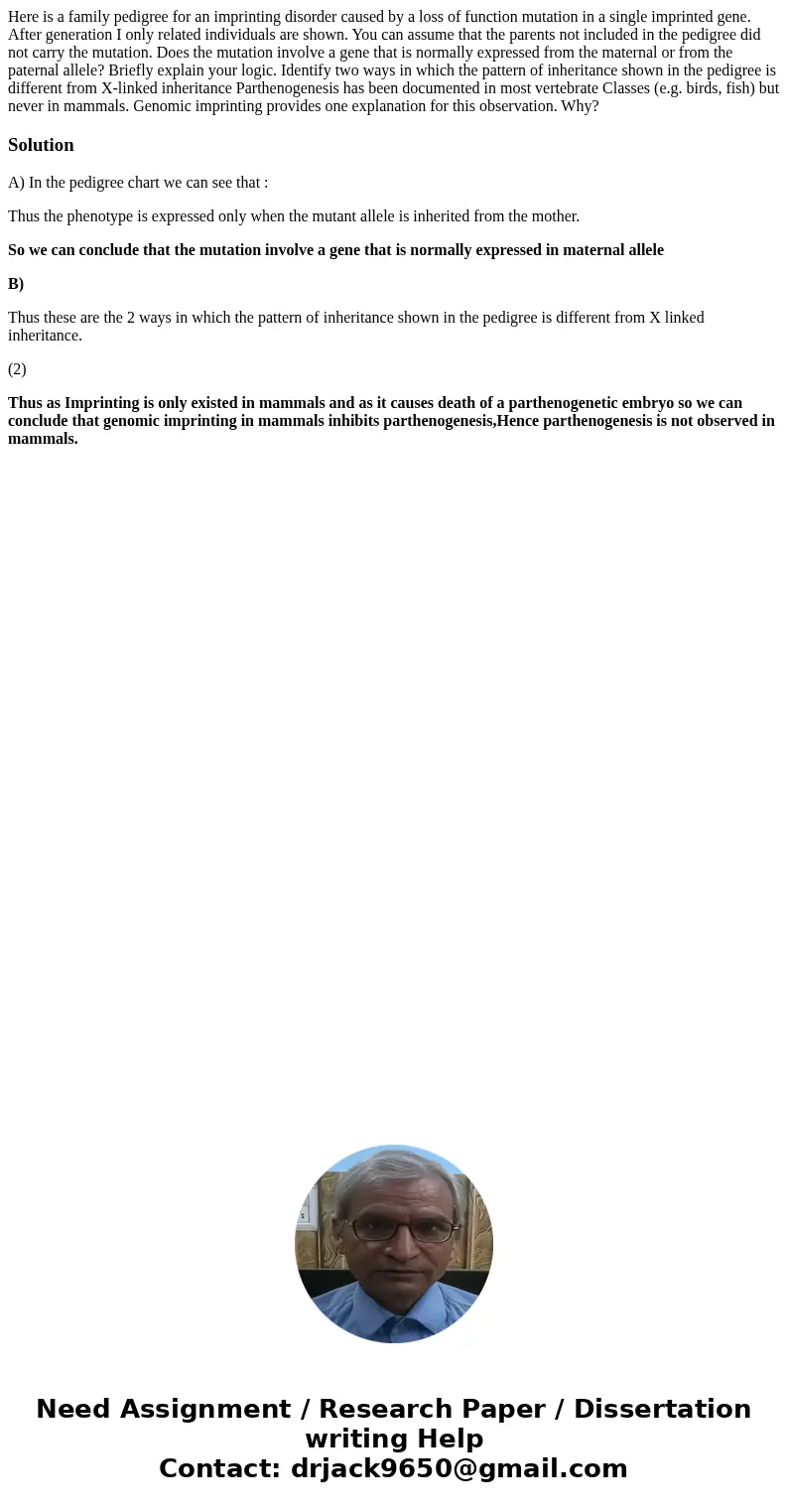Here is a family pedigree for an imprinting disorder caused
Here is a family pedigree for an imprinting disorder caused by a loss of function mutation in a single imprinted gene. After generation I only related individuals are shown. You can assume that the parents not included in the pedigree did not carry the mutation. Does the mutation involve a gene that is normally expressed from the maternal or from the paternal allele? Briefly explain your logic. Identify two ways in which the pattern of inheritance shown in the pedigree is different from X-linked inheritance Parthenogenesis has been documented in most vertebrate Classes (e.g. birds, fish) but never in mammals. Genomic imprinting provides one explanation for this observation. Why? 
Solution
A) In the pedigree chart we can see that :
Thus the phenotype is expressed only when the mutant allele is inherited from the mother.
So we can conclude that the mutation involve a gene that is normally expressed in maternal allele
B)
Thus these are the 2 ways in which the pattern of inheritance shown in the pedigree is different from X linked inheritance.
(2)
Thus as Imprinting is only existed in mammals and as it causes death of a parthenogenetic embryo so we can conclude that genomic imprinting in mammals inhibits parthenogenesis,Hence parthenogenesis is not observed in mammals.

 Homework Sourse
Homework Sourse